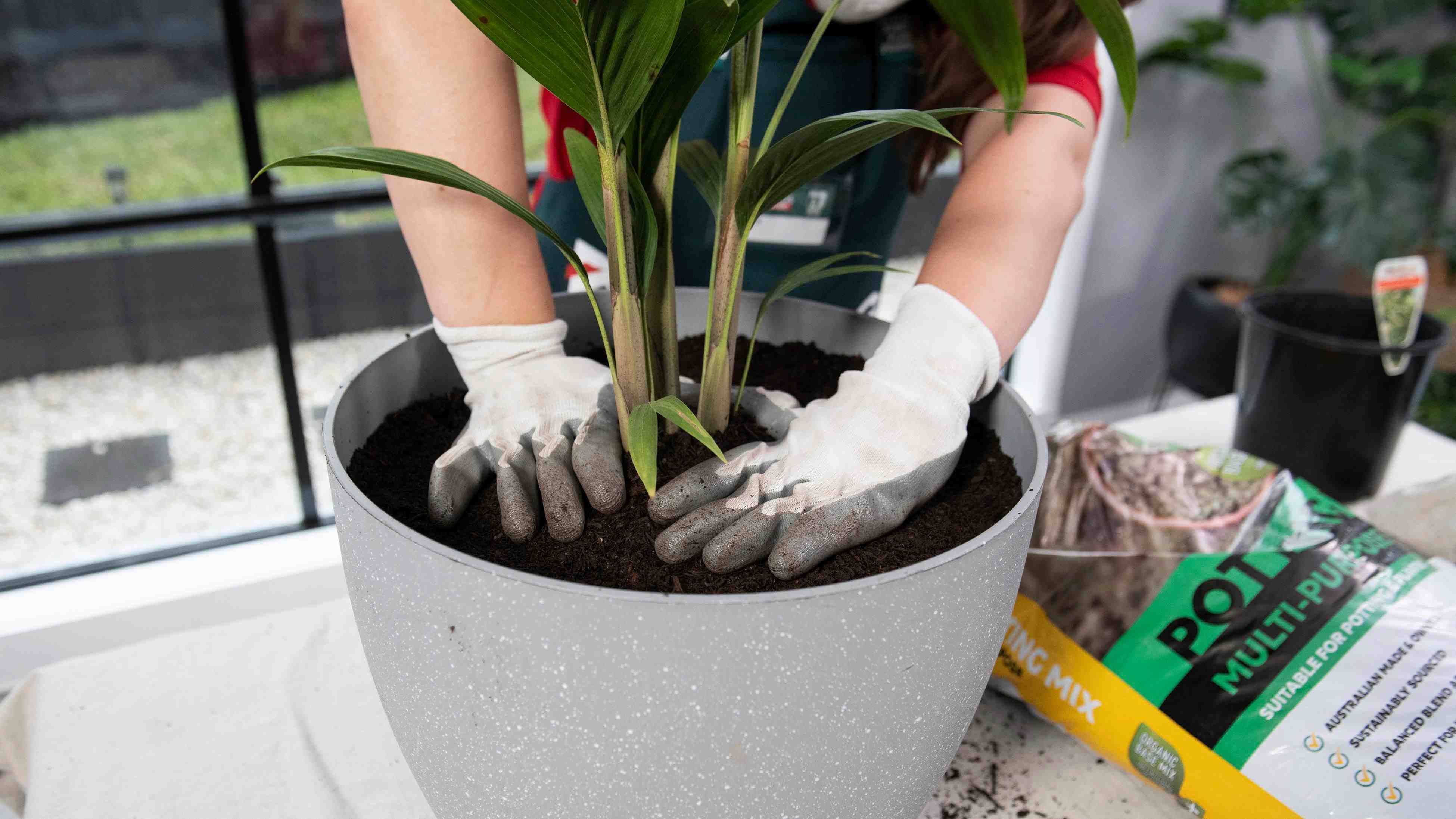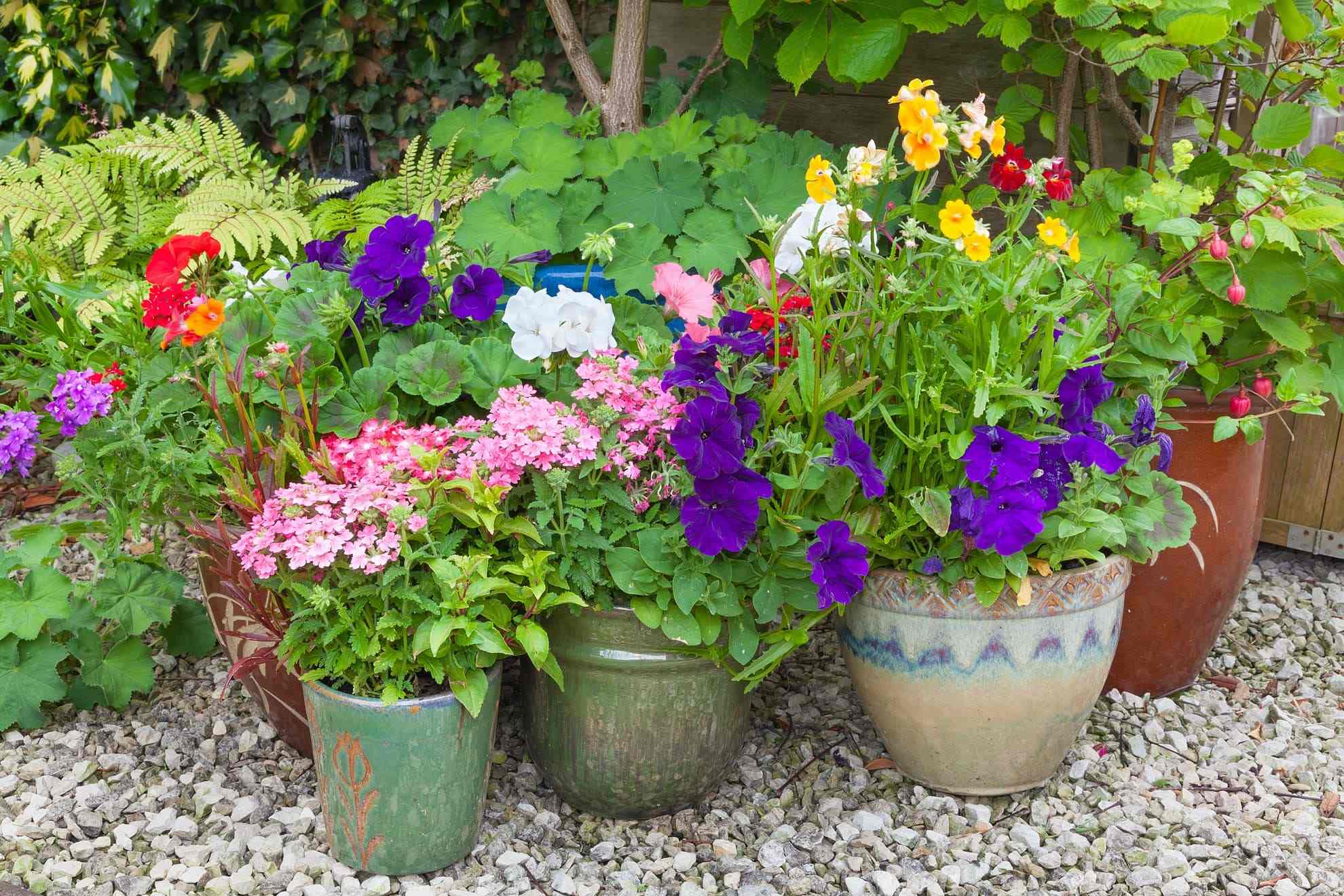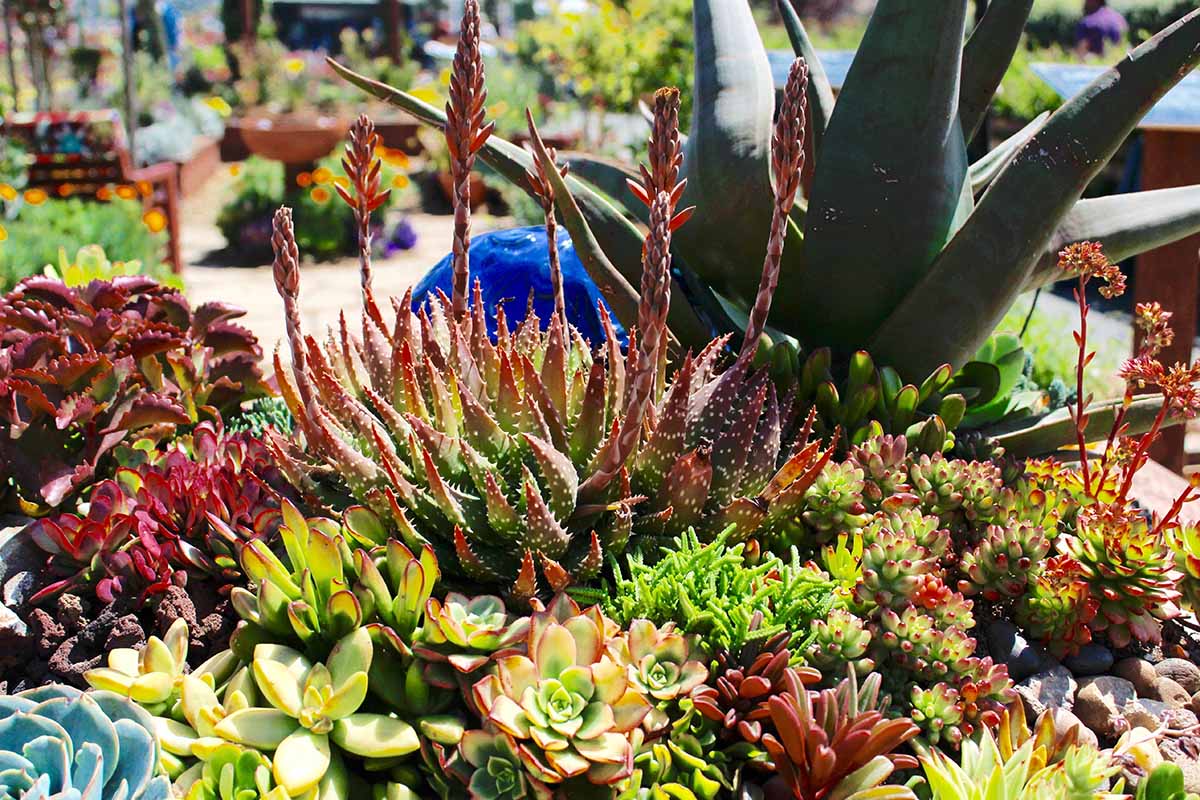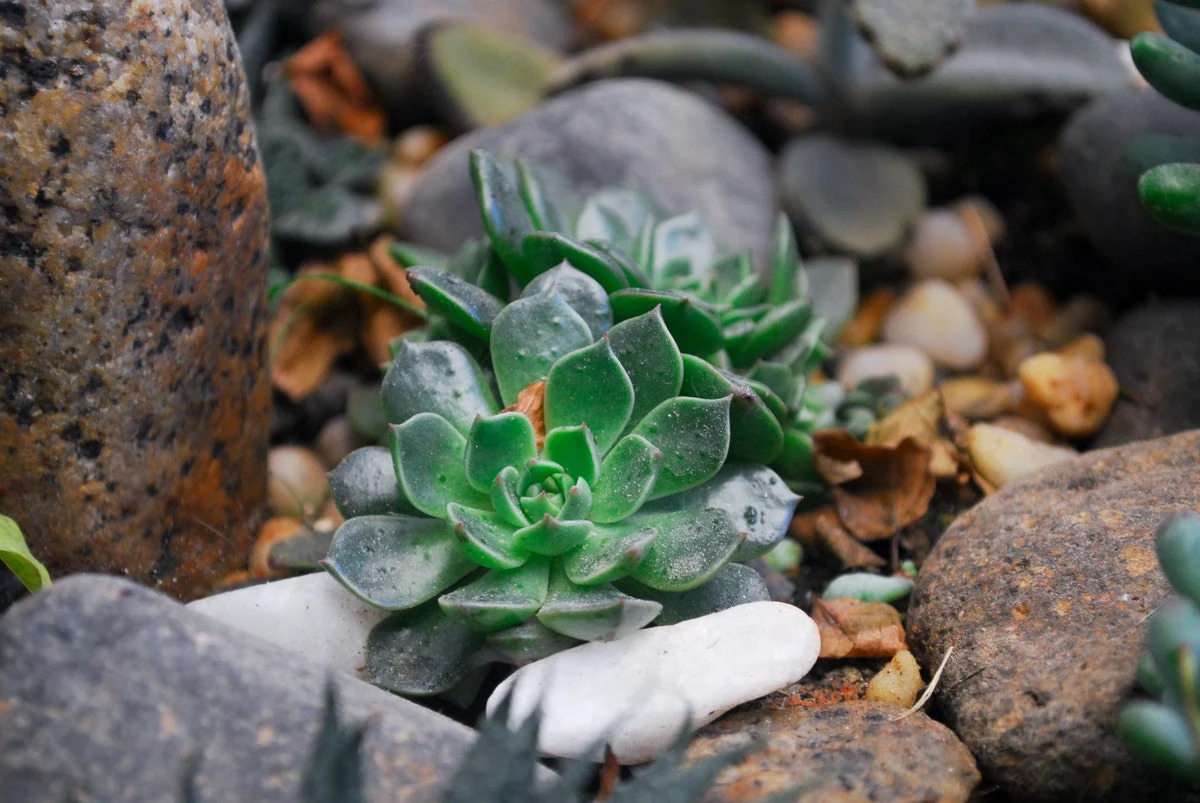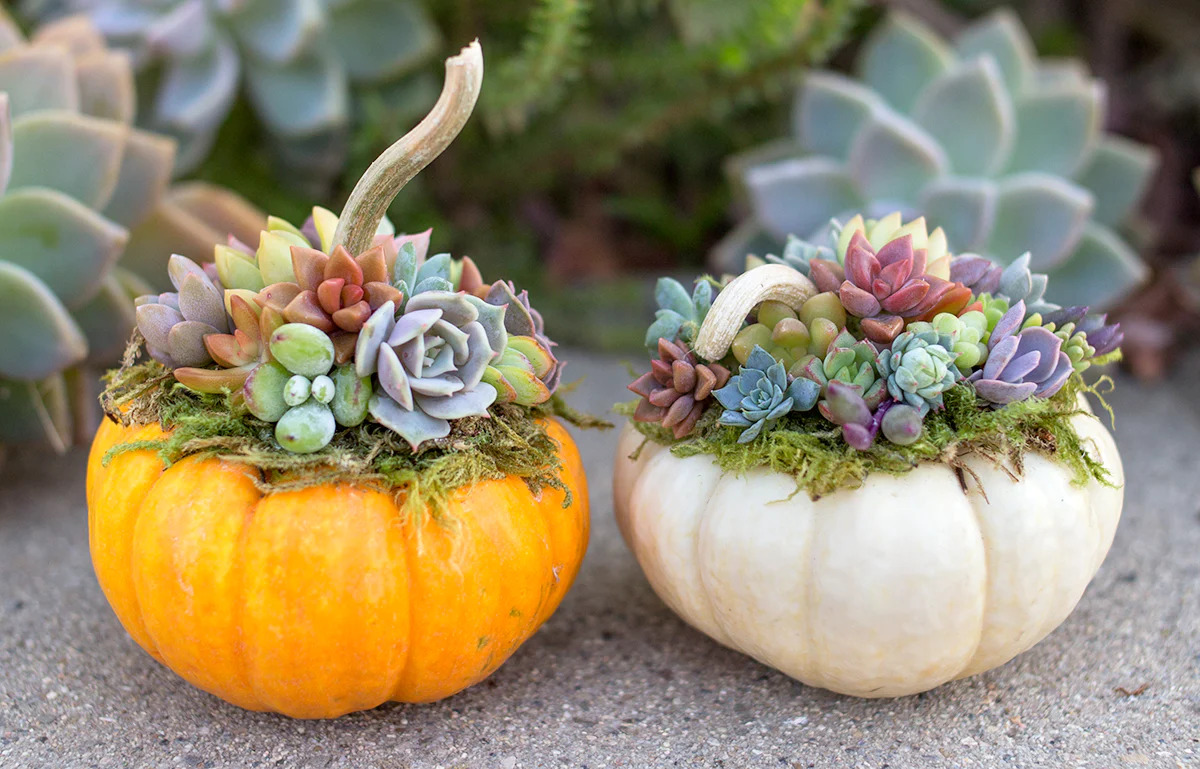Home>Gardening Techniques>Plant Care>How To Plant Succulents In Small Pots
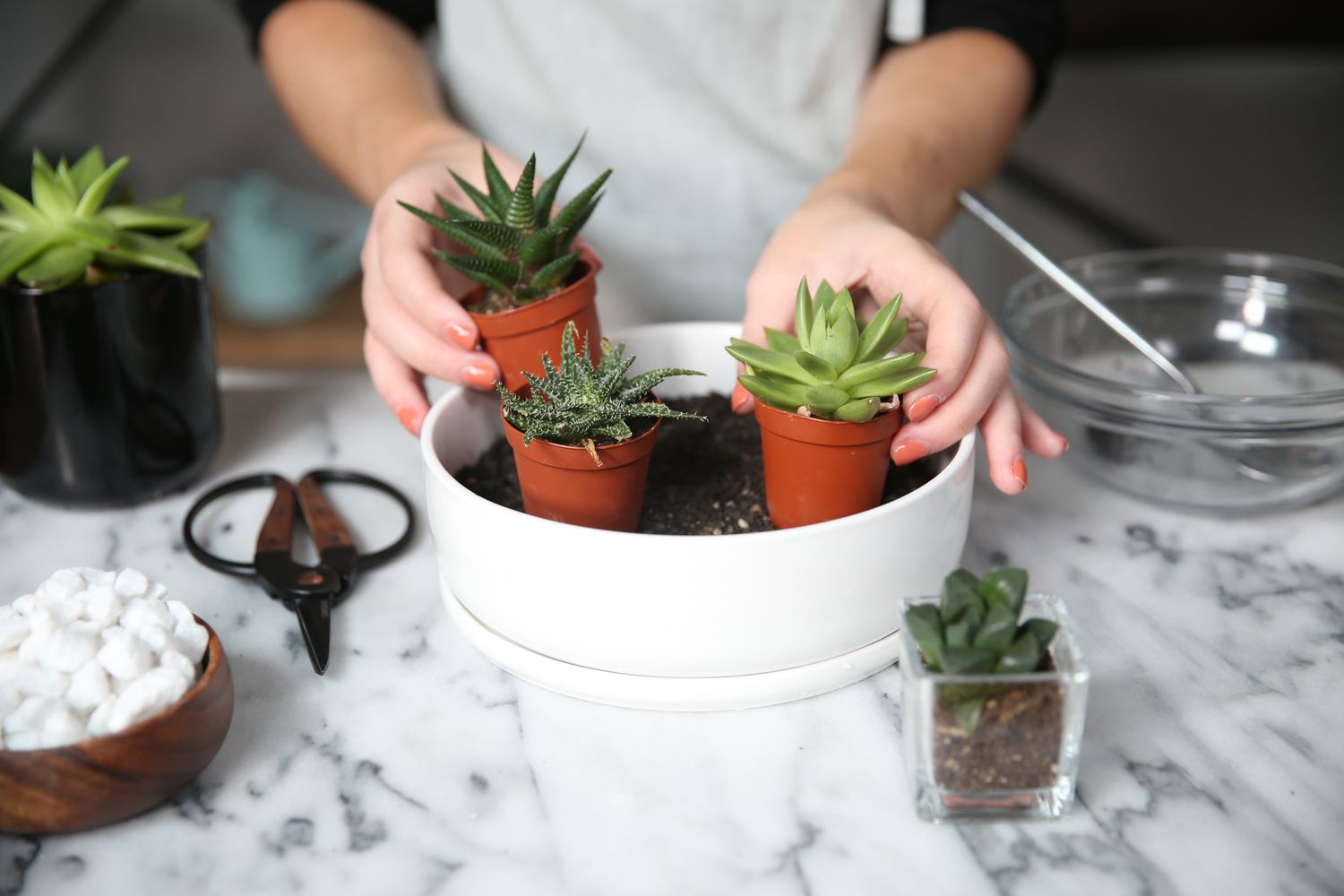

Plant Care
How To Plant Succulents In Small Pots
Modified: January 22, 2024
Discover the best practices for planting succulents in small pots. Get expert tips and advice on plant care to keep your succulents thriving.
(Many of the links in this article redirect to a specific reviewed product. Your purchase of these products through affiliate links helps to generate commission for Chicagolandgardening.com, at no extra cost. Learn more)
Table of Contents
Introduction
Welcome to the world of plant care! If you’re looking to add a touch of greenery to your home or office but are limited on space, planting succulents in small pots is the perfect solution. Succulents are low-maintenance plants that not only add beauty to any space but also provide numerous health benefits. They have gained immense popularity in recent years due to their unique appearance and ability to thrive in various conditions.
In this article, we’ll guide you on how to successfully plant and care for succulents in small pots. Whether you’re a novice or an experienced plant enthusiast, this comprehensive guide will equip you with the knowledge you need to create stunning succulent arrangements in limited spaces.
From choosing the right succulents to selecting the appropriate small pots and providing proper care, we’ll cover it all. Additionally, we’ll share some expert tips and tricks to ensure your succulents thrive and flourish in their small pots.
So, let’s dive in and discover the secrets to creating a mini succulent paradise!
Choosing the Right Succulents
When it comes to planting succulents in small pots, selecting the right species is crucial for their long-term health and growth. Here are some factors to consider when choosing your succulents:
- Size: Since you’re planting in small pots, opt for succulents that will stay compact and won’t outgrow their containers. Look for varieties like Echeverias, Haworthias, and Sedums, which have petite sizes and are perfect for small spaces.
- Light Requirements: Evaluate the lighting conditions of your space and choose succulents that match those requirements. Some succulents thrive in bright, direct sunlight, while others prefer partial shade. Spider plants, for example, are more tolerant of low light conditions, making them an excellent choice for indoor spaces.
- Watering Needs: Consider your watering routine and how often you’ll be able to water your succulents. Certain species, like Jade plants and Aloe vera, are more drought-tolerant and require less frequent watering, making them ideal for busy individuals or those with a tendency to forget watering schedules.
- Colors and Textures: Succulents come in a wide array of colors and textures, allowing you to create visually appealing arrangements. Mix and match succulents with different hues and textures to add depth and interest to your small pots. Don’t be afraid to experiment and get creative!
It’s also worth noting that some succulents are more forgiving and adaptable to various conditions, making them great choices for beginners. Some popular beginner-friendly succulents include the Zebra plant (Haworthia fasciata), Echeveria, and the Burro’s Tail (Sedum morganianum).
By carefully considering these factors when selecting your succulents, you’ll be well on your way to creating a stunning and thriving succulent collection in small pots.
Selecting the Appropriate Small Pots
Choosing the right pots for your succulents is just as important as selecting the plants themselves. Here are some key factors to consider when selecting small pots:
- Size: As you’re planting in small pots, it’s essential to ensure they’re appropriately sized for your succulents. Avoid pots that are too large, as they can retain excess moisture and lead to root rot. A general rule of thumb is to select pots that provide about an inch of space around the root ball of your succulents.
- Drainage: Good drainage is essential for succulents, as they are prone to root rot caused by excess moisture. Look for pots with drainage holes at the bottom to allow water to escape freely. If you fall in love with a pot that doesn’t have drainage holes, you can create your own by using a drill or adding a layer of gravel at the bottom of the pot to facilitate water drainage.
- Material: Pots are available in various materials, each with its own advantages and considerations. Terracotta pots, for example, are porous and allow for better airflow and moisture regulation. However, they may dry out quickly, requiring more frequent watering. Ceramic and plastic pots offer more moisture retention but may require additional care to prevent overwatering. Choose a material that best suits your environment and watering habits.
- Aesthetics: The pots you choose can also enhance the overall aesthetics of your succulent display. Consider the colors, textures, and styles of the pots that will complement your succulents and the surrounding space. You can create a cohesive look by selecting pots of similar colors or mix and match for a more eclectic and eye-catching display.
If you’re planting multiple succulents in one pot, opt for pots with enough space to accommodate their growth and prevent overcrowding. Additionally, consider the weight of the pots, especially if you’re planning to move them around frequently. Lightweight materials like plastic or resin can be more convenient in such cases.
Remember, the right pots not only provide a suitable environment for your succulents but also contribute to the overall aesthetic appeal of your plant collection. Take your time to choose pots that meet both functional and visual requirements, and you’ll be rewarded with a stunning display of small potted succulents.
Preparing the Potting Mix
The right potting mix is essential for the health and success of your succulents. Since succulents have unique water requirements, it’s important to prepare a well-draining mix that will prevent root rot. Here’s how you can prepare the perfect potting mix for your small potted succulents:
- Start with a Well-Draining Base: Begin by creating a base layer of well-draining material, such as coarse sand or perlite. This will ensure excess water can flow freely through the potting mix and prevent waterlogging. Approximately one-third of the pot’s volume should be dedicated to this drainage layer.
- Add Organic Matter: Next, incorporate organic matter to provide nutrients and improve the moisture-retaining capacity of the mix. Some suitable options include coconut coir, peat moss, or compost. Aim for about one-third of the pot’s volume to consist of organic matter.
- Include Gritty Components: To further enhance the drainage and aeration of the mix, add gritty components like coarse sand, pumice, or small gravel. These materials will help mimic the natural environment of succulents and prevent excessive moisture retention. Aim for about one-third of the pot’s volume to consist of these gritty components.
- Optional Additions: Depending on your preferences and the specific needs of your succulents, you can incorporate additional amendments. For instance, adding a small amount of activated charcoal can help control potential fungal growth. You can also mix in slow-release fertilizer at a ratio recommended for succulents to provide nutrients over an extended period.
Once you have gathered all the necessary ingredients, thoroughly mix them together until you achieve a well-incorporated, homogeneous blend. Before planting your succulents, moisten the potting mix slightly to help settle it in the small pots.
Remember, the goal of the potting mix is to strike a balance between drainage and moisture retention. A well-draining mix will allow excess water to escape while providing enough moisture for the succulents’ roots. By preparing the appropriate potting mix, you’ll provide the perfect foundation for your small potted succulents to thrive.
Planting the Succulents in Small Pots
Now that you have chosen the right succulents, selected suitable small pots, and prepared the appropriate potting mix, it’s time to plant your succulents. Follow these steps to ensure successful planting:
- Prepare the Small Pots: Start by filling your small pots with the prepared potting mix, leaving enough space at the top to accommodate the succulents. Gently tap the pots on a surface to settle the mix and eliminate any air pockets.
- Prepare the Succulents: Carefully remove the succulents from their nursery containers, taking care not to damage the roots. If the roots are tightly wound, loosen them slightly to encourage healthy growth.
- Plant the Succulents: Create a small hole in the potting mix and gently place the succulent in it, ensuring it sits at the same level it was in its original container. Press the mix firmly around the base of the plant with your fingertips to secure it in place.
- Space the Succulents: Depending on the size of the pot and the growth habits of your succulents, leave enough space between each plant to allow for their growth. Overcrowding can lead to competition for resources and hinder their overall development.
- Ensure Proper Alignment: Ensure that your succulents are growing upright and not leaning to one side. Adjust their positioning as needed, gently adding or removing potting mix to achieve the desired alignment.
- Water the Succulents: After planting, give your succulents a gentle watering to settle the potting mix around the roots. Be careful not to overwater at this stage, as succulents prefer drier conditions. Allow the potting mix to dry out slightly before watering again.
After planting, place your small potted succulents in a location that receives adequate light for their specific requirements. It’s important to note that newly planted succulents may need time to acclimate to their new environment, so monitor them closely during the first few weeks and make adjustments as needed.
With proper planting techniques, your succulents will establish themselves in their small pots and begin to grow and flourish in their new home.
Caring for Succulents in Small Pots
Caring for succulents in small pots is relatively easy, provided you understand their unique needs. Follow these essential care tips to ensure that your succulents thrive:
- Light: Succulents require bright, indirect sunlight for a minimum of six hours a day. Place your small pots near a south-facing window or provide them with artificial grow lights. However, be cautious of intense, direct sunlight as it can scorch the leaves.
- Watering: Succulents are adapted to arid environments and prefer infrequent, deep watering rather than frequent light sprays. Allow the potting mix to dry out almost completely between waterings and then thoroughly water the soil, ensuring the water drains out of the pot completely. Avoid overwatering, as this can lead to root rot.
- Temperature and Humidity: Succulents prefer average to warm temperatures (around 70-80°F or 21-27°C). They can tolerate some fluctuation, but avoid exposing them to extreme temperature changes. They also prefer moderate to low humidity, so be cautious of excessively humid environments.
- Fertilizing: While succulents are relatively low-maintenance, they still benefit from occasional fertilization. Use a well-balanced, water-soluble fertilizer formulated specifically for succulents. Follow the package instructions for proper application, usually every few months during the growing season.
- Pruning: Succulents generally require minimal pruning, but you may want to remove any dead or damaged leaves to maintain the overall aesthetics of the plant. If your succulent becomes leggy or top-heavy, you can prune back the stems to promote bushier growth.
- Pest Control: Keep an eye out for common succulent pests, such as mealybugs and spider mites. If you notice any signs of infestation, isolate the affected plant and treat it with a gentle insecticidal soap or neem oil spray. Regularly inspecting your succulents will help prevent pest problems before they escalate.
Remember to regularly rotate your small potted succulents to ensure even growth and prevent them from leaning towards the light. Additionally, monitor the roots of your succulents and repot them as needed to provide ample space for growth.
By following these care tips and observing your succulents closely, you’ll be rewarded with healthy, vibrant plants that bring beauty to your small pots.
Tips for Successful Succulent Planting in Small Pots
Planting succulents in small pots can be a rewarding and enjoyable experience. To ensure the success of your succulent plantings, here are some tips to keep in mind:
- Choose the Right Pot Size: Opt for small pots that allow for sufficient root space but avoid using containers that are too large. Succulents prefer snug quarters, as pots that are too big can retain excess moisture and lead to root rot.
- Provide Adequate Drainage: Proper drainage is crucial for succulents. Select pots with drainage holes at the bottom to allow excess water to escape. If your favorite pot doesn’t have drainage holes, consider adding a layer of gravel or using a double-potting method to ensure adequate drainage.
- Use a Well-Draining Potting Mix: Prepare a well-draining potting mix by incorporating materials like coarse sand, perlite, or pumice. This helps prevent waterlogging and promotes healthy root growth. Avoid using regular garden soil, as it tends to hold onto moisture.
- Water Sparingly: Succulents have adapted to survive in arid environments, so they don’t require frequent watering. Allow the potting mix to dry out almost completely between waterings. Overwatering is one of the most common causes of succulent health issues, so err on the side of underwatering rather than overwatering.
- Provide Adequate Sunlight: Succulents thrive in bright, indirect sunlight. Place your small potted succulents in a location that receives at least six hours of sunlight each day. If natural sunlight is limited, consider using artificial grow lights to supplement their light requirements.
- Protect from Frost: Many succulents are not frost-tolerant. If you live in a region with cold winters, bring your small potted succulents indoors or provide them with frost protection during the colder months to prevent damage.
- Monitor for Signs of Overcrowding: Keep an eye on the growth of your succulents. If they start to outgrow their small pots or become overcrowded, consider repotting them into larger containers to allow for continued growth and development.
- Rotate for Balanced Growth: Succulents have a tendency to lean towards the light source. To ensure balanced growth, regularly rotate your small potted succulents to expose all sides to equal amounts of sunlight.
- Observe and Experiment: Every succulent and environment is unique. Take the time to observe your plants closely, understand their specific needs, and adapt your care routine accordingly. Don’t be afraid to experiment and learn through trial and error.
By following these tips and providing proper care, you’ll be well on your way to creating a thriving succulent display in your small pots, bringing joy and beauty to your space.
Conclusion
Congratulations! You are now equipped with the knowledge and tips needed to successfully plant and care for succulents in small pots. Creating a mini succulent paradise is not only a delightful hobby, but it also brings natural beauty and tranquility to your home or office.
Remember to choose the right succulents that fit your space and light conditions. Select small pots with proper drainage to ensure the health of your succulents’ roots. Prepare a well-draining potting mix that mimics their natural environment. When planting, be gentle with the roots and ensure proper alignment. Provide adequate light, water sparingly, and monitor the temperature and humidity levels to create the perfect environment for your succulents to thrive.
Additionally, keep in mind the importance of pruning, fertilizing, and pest control to maintain the health and aesthetics of your small potted succulents. Regularly rotate your plants for balanced growth and repot as needed to accommodate their development.
As you embark on your succulent planting journey, embrace experimentation and observation. Each succulent and environment is unique, so don’t be afraid to adapt and learn through hands-on experience.
Now, go forth and enjoy the wonderful world of succulents in small pots. Embrace the creativity and beauty they bring to your space, and relish in the joy of nurturing and caring for these fascinating plants. Happy planting!

